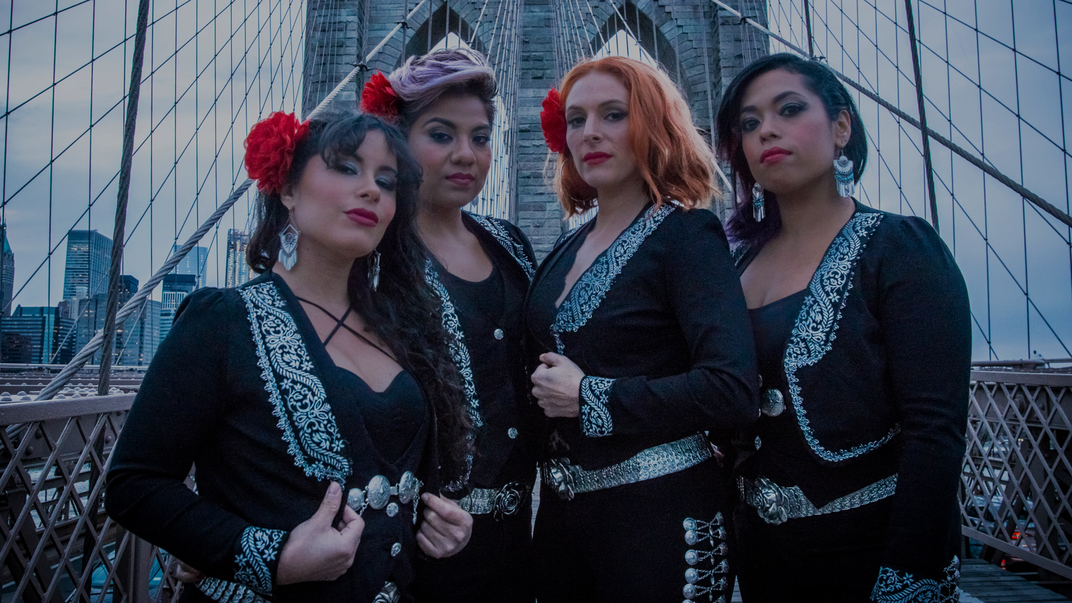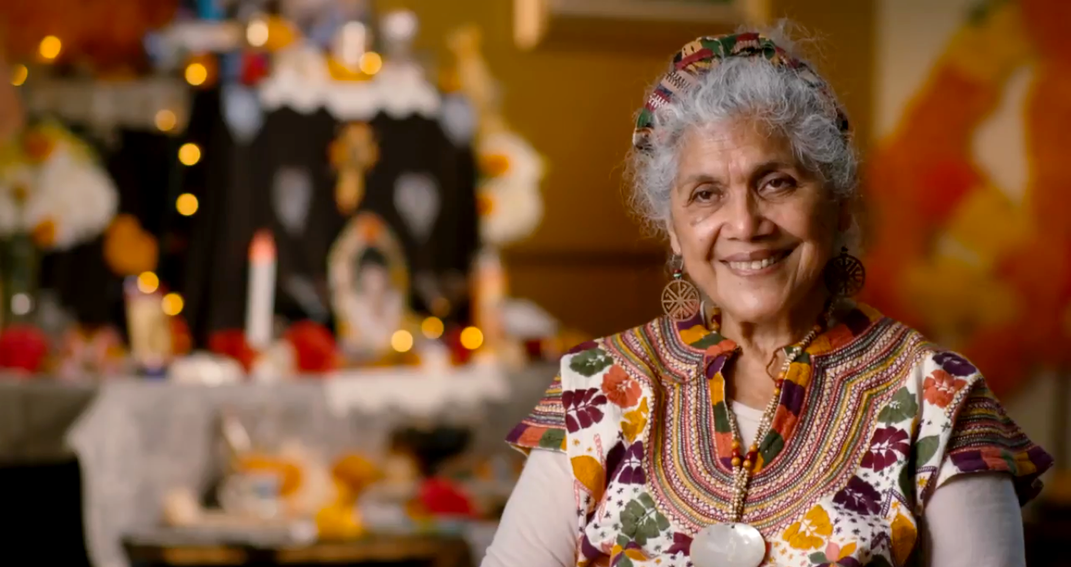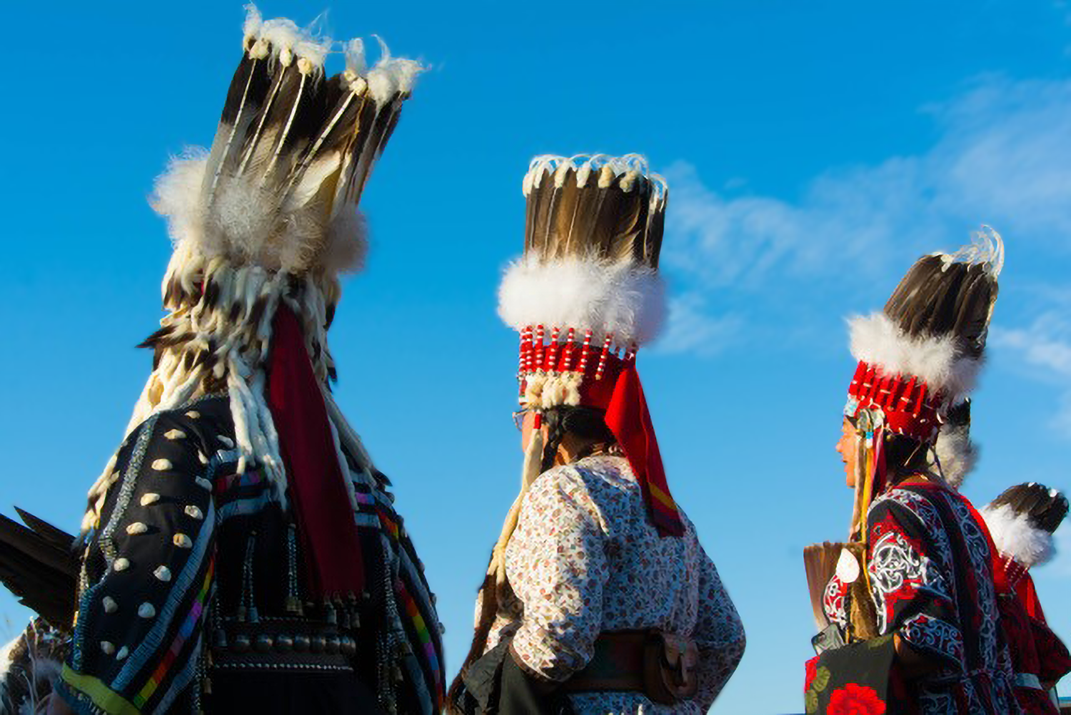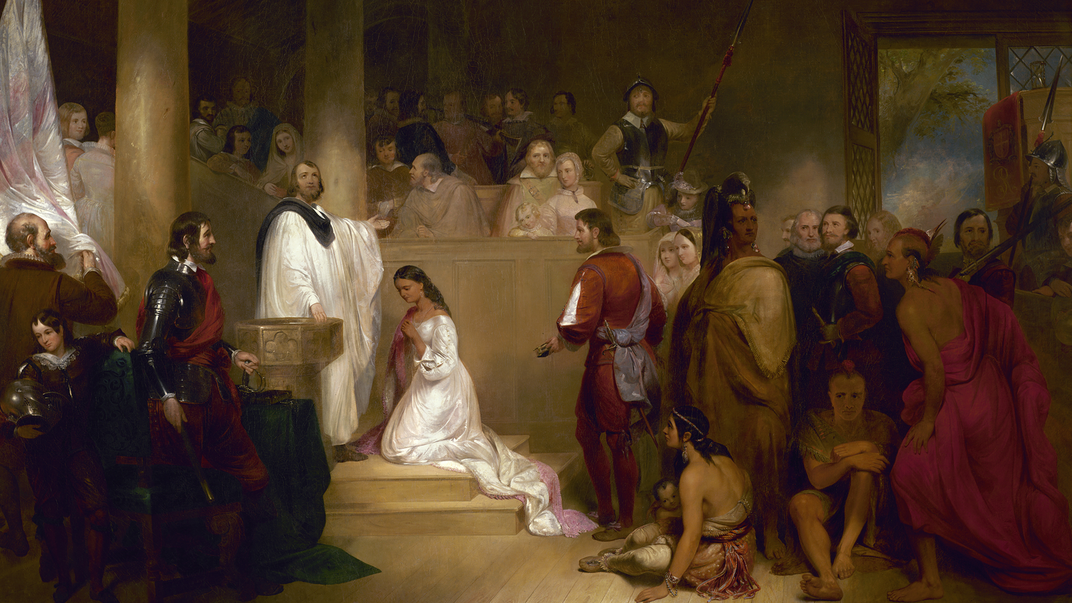NATIONAL MUSEUM OF THE AMERICAN INDIAN
From new music and dance fusions to traditional festivals, the museum’s Native American Heritage Month is something special
Everything people need to know to join the National Museum of the American Indian in celebrating the diversity and contributions of Native Americans and Alaska Natives during Native American Heritage Month this November. For friends unable to visit Washington, D.C., or New York, the museum is webcasting many of these public programs live, then archiving them online.
:focal(1590x420:1591x421)/https://tf-cmsv2-smithsonianmag-media.s3.amazonaws.com/blogging/featured/Pamyua_16_to_9.png)
There are 6.8 million Native Americans and Alaska Natives living in the United States, as well as millions more Indigenous people living throughout the Western Hemisphere, all with unique traditions, languages, values, and histories. During November—Native American Heritage Month—the National Museum of the American Indian in Washington, D.C., and New York City celebrates the diversity and contributions of these Native cultures with free festivals and concerts, curators' talks, and family activities. For those unable to attend in person, the museum is webcasting many of these public programs live and archiving them online.
In additon, on November 16 the new exhibition Stretching the Canvas: Eight Decades of Native Painting opens at the museum in New York. Stretching the Canvas presents works from the museum’s collections that expand traditional understandings of American Indian Art and change the way authenticity of Native art is perceived. Early November is also the last opportunity to see Taíno: Native Heritage and Identity in the Caribbean | Taíno: herencia e identidad indígena en el Caribe, produced in collaboration with the Smithsonian Latino Center. The exhibition, which explores current knowledge about the historical, cultural, and family legacies of the Native peoples of Puerto Rico and other islands of the Spanish-speaking Caribbean, closes in New York on November 12.
Performances

Flor de Toloache
Friday, November 1, 7:30 and 8:30 pm
Live online
Tune in via live webcast to celebrate Día de los Muertos with the music of Latin Grammy-winning all-women mariachi group Flor de Toloache. Musicians Mireya I. Ramos (violin, vocals, guitarron), Shae Fiol (vihuela, vocals), Jackie Coleman (trumpet), and Noemi Gasparini (violin, vocals) bring together diverse cultural backgrounds in Mexico, Puerto Rico, the Dominican Republic, Cuba, Australia, Colombia, Germany, Italy, and the United States. The result is an edgy, versatile, and fresh take on traditional Mexican music. (Flor de Tolache is performing during the museum’s illumiNATIONS Día de los Muertos party, which is fully booked. Join the museum’s email list to receive advance notice of special events.)
Rasmuson Theater Celebration Featuring Pamyua
Thursday, November 7, 6:30 pm
National Museum of the American Indian, Washington and live online
The museum celebrates 15 years of programming outstanding Native and non-Native thinkers and performers in the beautiful Rasmuson Theater, one of the great cultural arts venues on the National Mall, with the magical music and dance interpretations of Pamyua. Brothers Stephen and Phillip Blanchett, of Yup’ik and African American descent, formed Pamyua in 1995, with traditional Yup’ik dancer and culture bearer Ossie Kairaiuak joining them in 1996. Pamyua brings a unique style and contemporary twist to Yup’ik drum-dance songs. And their practice of creating as they perform ensures that no two Pamyua concerts are ever the same.
Native Sounds Downtown! Featuring Pamyua
Saturday, November 9, 2 to 3 pm
American Indian Museum Heye Center, Diker Pavilion, New York City
Pamyua follows its Washington performance with an afternoon concert at the museum in Lower Manhattan.
Hear Me Say My Name
Saturday, November 23, Friday, November 29, and Saturday, November 30, 11:30 am and 1 pm
National Museum of the American Indian, Washington
"I am not your mascot, and I don't live in a tipi. See me for who I am, hear me say my name." How do American Indian stereotypes, prejudice, and identity shape the discussion of what it means to be a young person in our country today? This original multimedia play, created in collaboration with Smithsonian Associates Discovery Theater, tackles America's assumptions about American Indians and starts a conversation with audiences reclaiming rich history, challenges, hopes, and dreams. After the play, the audience is invited to explore the exhibition Americans to learn more. For performances in December, see the museum's Calendar of Events.
Festivals and Native American Heritage Day

Día de los Muertos Weekend Festival
Saturday and Sunday, November 2 and 3, 10 am to 5:30 pm
National Museum of the American Indian, Washington
Highlights from the festival on Sunday will be webcast live
The National Museum of the American Indian celebrates Día de los Muertos (Day of the Dead), with a weekend of music, dance, and family activities. Artist Lilia Ramirez (Nahua) works with visitors of all ages to create an interactive mural featuring La Catrina, the elegant skeleton drawn by Mexican illustrator Jose Guadalupe Posada. People will find La Catrina throughout the festival, perhaps lounging on an ofrenda (altar), dancing with jaguars and old men, grinning from a magnet activity, waiting to be dressed in marigolds, emerging from a sawdust carpet, having her bones connected into a puppet, or posing with visitors for photos.
The festival features a traditional ofrenda created by National Heritage Fellow Ofelia Esparza (Purépecha) and her daughter Rosanna Esparza Ahrens, who have collaborated in creating altars since 1999. Esparza and Smithsonian folklorist Cynthia Vidaurri present talks on Day of the Dead traditions in Mexico and the United States. Grupo los Tecuanes performs music and dances throughout the festival. Visitors can honor their loved ones by making paper marigolds, the bright flowers that decorate family ofrendas set up for the Day of the Dead. The museum’s Potomac Atrium and imagiNATIONS Activity Center are devoted to presentations and hands-on activities for young (and not-necessarily-young) festival-goers.
Day of the Dead/Día de Los Muertos
Saturday, November 2, 11 am to 5 pm
American Indian Museum Heye Center, New York City
Visitors can participate in the museum’s annual celebration with performances by the Aztec group Cetiliztli Nauhcampa, a community ofrenda (altar) and hands-on activities for all ages.

Blackfeet Nation Tribal Festival
Saturday and Sunday, November 16 and 17, 10 am to 5 pm
National Museum of the American Indian, Washington
Citizens of the Blackfeet Nation share many aspects unique to Blackfeet culture during this two-day festival. The Blackfeet Reservation, located in northwestern Montana along the eastern slopes of the Rocky Mountains, is home to one of the 10 largest tribes in the United States, with more than 17,000 enrolled members. Throughout the festival weekend, Blackfeet artists, performers, historians, and culture bearers will share demonstrations and performances. Highlights will include seasonally appropriate dances and stories, and demonstrations of making traditional regalia from the hides of buffalo, deer, elk, and antelope. During the celebration, visitors can see traditional and contemporary artistic creations, including beadwork, handcrafted jewelry, quillwork, pottery, horsehair work, moccasins, carvings, and baskets.
Native American Heritage Day: Family Fun Day
Friday, November 29, 10 am to 4 pm
National Museum of the American Indian, Washington
The museum’s unique family celebration of Native American Heritage Day showcases Native culture through interactive dancing, games, storytelling, hands-on activities and make-and-takes, as well as music and dance presentations. The program features the Dineh Tah Navajo Dancers throughout the day. Join us in recognizing the many contributions of Native Americans to all aspects of life in the United States.
Films, Discussions & Curators' Talks
Warrior Women
Documentary film followed by discussion led Mandy Van Heuvelen (Mnicoujou Lakota)
Thursday, November 14, 10:30 am to 12:30 pm
Smithsonian’s Anacostia Community Museum
This timely documentary examines social and civic activism through the eyes of Madonna Thunder Hawk, a longtime organizer of the American Indian Movement. The film explores what it means to balance a movement with motherhood and how activist legacies are passed down from generation to generation in the face of a government that has often met Native resistance with mass violence. Mandy Van Heuvelen (Mnicoujou Lakota), the National Museum of the American Indian’s lead cultural interpreter, facilitates discussion after the film. RSVP.

Pocahontas: Her Place in the Emerging Atlantic World and Nascent United States
Tuesday, November 19, 2 pm
National Museum of the American Indian, Washington and live online
Pocahontas lived and died not only in the maelstrom of the English–Powhatan encounter of the early 17th century, but at a singular moment in world history. She participated in the newly emerging Atlantic world. Her legacy helped shape Europeans’ conception of that world and the United States’ conception of itself. Why and how so? This presentation by Cécile R. Ganteaume, co-curator of the museum's award-winning exhibition Americans, explores what we know about Pocahontas and her early impact on European and American thought.
Rethinking Thanksgiving with Perry Ground
Thursday and Friday, November 21 and 22, 1:30, 2, 2:30, and 3 pm; Saturday, November 23, 11 and 11:30 am, 1:30, 2, 2:30, and 3 pm.
American Indian Museum Heye Center, New York City
Perry Ground (Onondaga Nation) leads an engaging and informative workshop and storytelling session about the history of America’s very misunderstood holiday. Based on the only primary source documents that mention "the First Thanksgiving," and using a quiz-style format, Ground presents accurate and culturally appropriate information about the English settlers at Plymouth and the Wampanoag people, and offers a better understanding of how this history came to be the Thanksgiving holiday we know.
Children’s Programs
Exploring Art + Technology Labs
Saturday, November 2 and 16, 1 to 4 pm
American Indian Museum Heye Center, New York City
Exploring Art + Technology Labs, hosted on the first and third Saturday of every month, are hands-on workshops focused on Indigenous innovations. November’s program, Potatoes: From Peru to Poland, explores how potatoes travelled the world. Learn about the origin, adaptation, and journey of the (not-so) simple potato. Discover how Indigenous people of the Andes developed more than 7,000 varieties of potato, and create your own potato print to take home!
Culinary Connections
Wednesday, November 6, 13, 20, and 27, 1 to 4 pm
American Indian Museum Heye Center, New York City
Discover the Native origins of your favorite meals. Record a family recipe or food memory and design a recipe box. Share connections between culture and food and leave with a new recipe to try at home.
Storybook Reading and Activity
November 9, 1 to 2 pm
American Indian Museum Heye Center, New York City
The second Saturday of every month, museum staff lead a storybook reading and related make-and-take activity. November’s program is a reading of Giving Thanks by Chief Jake Swamp (Mohawk) and an opportunity to make a cornhusk doll to take home.
In partnership with Native peoples and their allies, the National Museum of the American Indian fosters a richer shared human experience through a more informed understanding of Native peoples. The museum strives toward equity and social justice for the Native peoples of the Western Hemisphere through education, inspiration and empowerment. It features exhibitions and programs in New York City and the National Mall in Washington, D.C. For additional information, including hours and directions, visit AmericanIndian.si.edu. Follow the museum via social media on Facebook, Twitter and Instagram.
